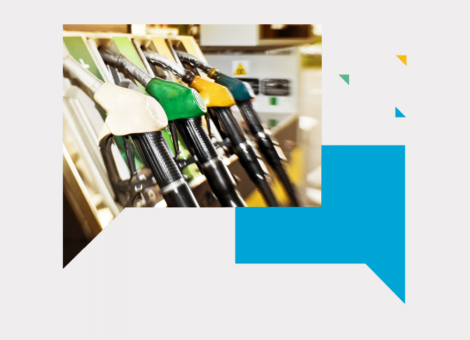Putting pricing strategies into practice as we emerge from COVID-19
The last two years have brought a unique set of challenges to pricing teams the world over with the drop in demand caused by the pandemic, and the added pressure of rising prices.
These market conditions can lead to many business rules not being met by the typical setup of an automated pricing environment and therefore pricing analysts will subsequently be spending more time reviewing price calculations and making tactical decisions.
Over time, it can be all too easy for manual pricing – or tactical edits to pricing rules – to become habitual and cause a disconnection between the pricing strategy, and the actual pricing decisions that are taken.
Critically, this disconnect can be compounded by the fact that pricing teams are spending less time analyzing performance – at site, regional or national level – and understanding the drivers of performance.
Collaboration – from strategies to rulesets
Whether a fuel retailer is using optimized pricing or not, it is critical to ensure that business rules within your pricing software are configured that meet your legal, commercial and brand objectives.
The adage “pricing takes a village” is undoubtedly true and not because it is a resource-hungry function, but because proper collaboration between the pricing team and the commercial, operational and financial functions is the key to success.
Each of these other functional teams will have a strong perspective and the pricing team should be engaging with them on a regular basis. By way of example – operational teams will have key information about local market conditions that may need consideration; commercial teams can support with information about competitor promotions, or macro brand considerations; and the finance function can ensure that current and projected levels of financial performance are understood so that a sustainable path to achieving this can be found.
By spending less time manually pricing and more time collaborating and honing the competence for translating a strategy into a ruleset, the pricing team can elevate the level of insight that can garnered which ultimately drives the highest levels of performance.
For more information, my colleague Natalie White wrote about the various factors that are key to supporting a pricing team to ensure that automated pricing remains strong.
Maximize profitability, minimize risk – the Kalibrate suite
Kalibrate offer a unique combination of advanced data science techniques for the calculation of optimized prices, along with a comprehensive set of pricing rules – informed from decades of pricing experience – that enable the maximization of profitability, whilst also managing risk.
Of course, it’s not always possible to allow the strategy to run unchecked and therefore in addition to pricing rules, Kalibrate provide tactical market pricing tools that can supplement a pricing strategy. These can be of particular importance with oil prices rising throughout H2 of 2020 and most of 2021.
There are a number of visualizations within Kalibrate’s Intel suite that provide insights with respect to the effect of using such market pricing tactics, and can help determine any adjustments that should be considered for subsequent iterations of the tactic.
The Intel suite also contains specific tools that provide insight to operational pricing performance through ongoing analysis of demand and pricing behavior, and can help enabling a pricing team to identify where there may be opportunity to improve automation rates.
Kalibrate are therefore able to support the full pricing lifecycle, ensuring pricing teams can back up their decisions with data.
Solutions that fit
Retailers may have different operational process in place to support pricing activity, but the applicability of pricing rules to the overarching strategy should be a universal concept.
The synergy of extensive industry knowledge and proven data science methodology is the optimal approach to achieving strong and sustainable results – the people and products of Kalibrate are here to support you through your pricing journey.
Kalibrate’s pricing audit and logical sequential strategy, packed with data analysis and business intelligence guides the clients towards pricing excellence in their local markets. Optimization is not a black box, but robust data science explored, and as a highly flexible and configurable solution, Kalibrate can handle different clients’ sizes, in markets of differing maturity.
Read more articles about:
Fuel pricingSubscribe and get the latest updates
You may unsubscribe from our mailing list at any time. To understand how and why we process your data, please see our Privacy & Cookies Policy
Related posts
Fuel pricing
Pricing manually? It's a bold move
Natalie White explores the dos and don'ts of manual pricing, and why changing your settings, rather than your prices,...

Fuel pricing
In-ground cost vs replacement cost
Natalie White and Elena Lau discuss in-ground cost vs replacement cost when creating a price position to maximize...

